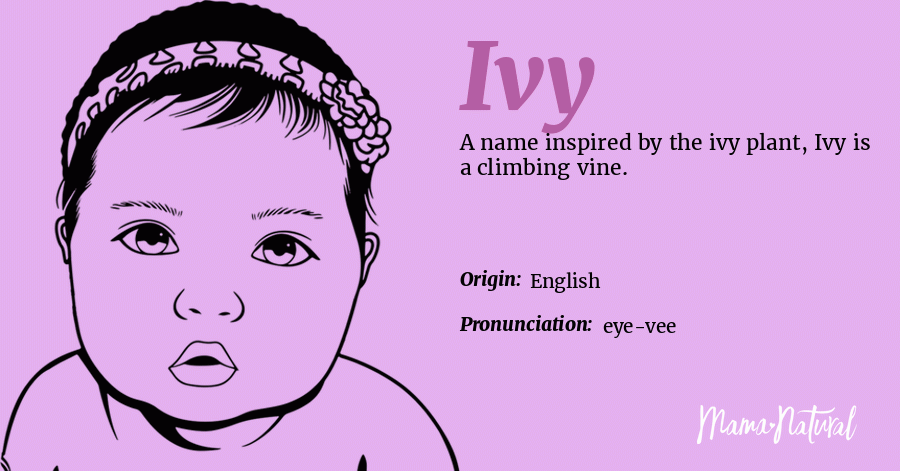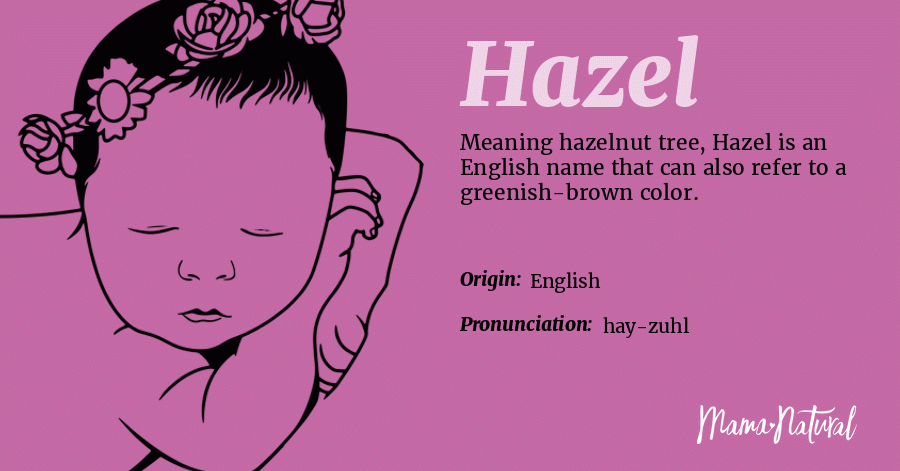what does the name ivy mean
 Baby Girl Name: Ivy. Meaning: Faithfulness; Plant Name. Origin: English. | Baby girl names, Original baby names, Baby girl names elegant
Baby Girl Name: Ivy. Meaning: Faithfulness; Plant Name. Origin: English. | Baby girl names, Original baby names, Baby girl names elegantHedera Hedera Hedera rhombea, Aizu, Fukushima pref., Japan Kingdom: Clade: Clade: Clade: Clade: Order: Family: Subfamily: Genus: Species See text See text Hedera, commonly called ivy (multiple ivies), is a genus of 12–15 species of climbing or low-level in the family, native to west, central and south, , northwest and through the east center-sur towards and . HederaivyiviesContentsEtymology[] The name of the genus Hedera is the word for the ivy, which is cognate with χανδнω (khandánō) "to get, grab", both eventually drifting from *ghed- "to take, grab, take". Hedera can be translated as "the subjection (plant)". The modern English ivy derives from the average English ivi of the ancient English īfienda, in turn derived from Proto-Germanic *ibahs. The meaning is uncertain, but the word can be aware of the meaning of the word "ephuon" which means, not Hedera helix, but the (not related) (lavender). Description[] On the level floor they remain creepy, not exceeding 5–20 cm high, but on suitable surfaces to climb, including natural or artificial structures such as rock faces or built and structures, they can climb at least 30 m above the ground. The Ivies have two types, with leaves of young lobes on stalks of scarp and climbing and leaves of unlodged adults on sprigs of fertile bloom exposed to the full sun, usually high on the crowns of trees or the summits of the rocks, of 2 m or more on the ground. Youth and adult shoots also differ, being the first slender, flexible and scrambling or climbing with small aerial roots to strengthen the bearing to the substrate (rockbed or tree), the last thicker, self-supported and rootless. They are green-yellow with five small petals; they occur in autumn at the beginning of the winter and are very rich in . He is a green-black, dark purple or (rarely) yellow 5 to 10 mm in diameter with one to five seeds, mature in late winter at half a pair. The seeds are scattered by the birds that eat the berries. The species differs in detail from the shape and size of the leaf (in particular of the youth leaves) and in the structure of the leaf, and also in the size and, to a lesser extent, the color of the flowers and the fruits. The number also differs between species. The basic diploid number is 48, while some are tetraploid with 96, and others hexaploid with 144 and octaploid with 192 chromosomes. Ecology[]The Ivies are native to Eurasia and North Africa, but have been introduced in North America and Australia. They invaded disturbed forest areas in North America. Ice seeds are spread by birds. Ivies are of great ecological importance for their production of nectar and fruit trees, both produced at times of the year when there are few sources of nectar or fruit available. The bee of ivy depends entirely on the ivy flowers, the moment of its entire life cycle around the ivy bloom. The fruit is eaten by a variety of birds, including , , and . The leaves are eaten by some species of such as , , , , (which feeds exclusively of ivy), and . A very wide range of invertebrate and over-investment shelter in the dense entanglement of hiedra woods. Birds and small mammals also nest in ivy. It serves to increase the surface and complexity of forest environments. Taxonomy[p] ]The following species are widely accepted; they are divided into two main groups, depending on whether they have squamous or stellar tricomas on the sides of the leaves: The ivy species are largely and closely related, and many have been treated at times as varieties or subspecies of H. helix, the first species described. Several additional species have been described in the southern parts of the first, but they are not considered different by most botanists. The only verified hybrid involved is the intergenic hybrid, a cross between Hedera Hibernica and. This hybrid was once produced in a garden in France in 1910 and was never successfully repeated, being kept in cultivation by vegetative propagation. Despite the close relationship between Hedera helix and H. hibernica (until it is considered relatively recently with specific), there have not yet been any hybrids among them. However, hybridization may have played a role in the evolution of some species in the genus. Uses and cultivation[]The Ivies are very popular in the cultivation within their native range and climates compatible in other places, for their evergreen foliage, attraction of wildlife, and for adaptable design uses in narrow spaces of plantation and on high or wide walls for aesthetic addition, or to hide walls, fences and trunks of trees. Numerous with variegated foliage and/or unusual leaf shapes have been selected for horticultural use. Problems and dangers[]About trees[]Many debate has involved if ivory climbing trees will damage them. In Europe, the damage is generally lower, although there may be competition for soil nutrients, light and water, and the trees that support the growth of the heavy ivy may be susceptible to damage. The United Kingdom says that "Ivy has long been accused of strangling trees, but does not damage the tree at all, and even supports at least 50 species of wildlife." The damage and problems are more significant in , where the ivy is without the natural plagues and the diseases that control their vigor on their native continents; the photosynthesis or structural strength of a tree can be overwhelmed by the aggressive growth of the ivy that leads to death directly or by opportunistic disease and insect attacks. Invasive exotica[ ]The ivory species have become a native natural plant (exotic invasive), especially mature and woody, and also a horticultural in gardens of the western and southern regions of North America with milder winters. The Ivies create a dense and vigorously suffocating and shaded green deck that can be extended through underground rhizomes and corridors on the ground quickly over large natural areas of the community and overcome native vegetation. The use of ivy as in horticulture in and other states is now discouraged or prohibited in certain jurisdictions. Similar problems exist in . For example, both countries originally cultivated drought tolerant canariensis and H. algeriensis and H. helix European in gardens, parks and landing paths, but have become aggressively invasive in coastal forests and coastal ecosystems, which now require costly eradication programmes. Toxicity[] Berries are moderately toxic. The Ivy foliage contains and . Falcarinol is able to induce. It has also been shown to kill breast cancer cells. Size Insects[]The ivy flowers are contaminated by and are particularly attractive to the . Etymology and other names[] The name ivy derives from ifig, known with German Efeu, of unknown original meaning. The scientific name Hedera is the classic Latin name for the plant. The former regional common names in Britain, no longer used, include "Bindwood" and "Lovestone", by the way it clings and grows on stones and bricks. The regional common names of H. canariensis include "California ivy" and "Izquierda Algeriana"; for H. helix, regional common names include the generic "Spanish Left". The name ivy has also been used as a common name for several other non-related plants, including Boston ivy (Japanese Creeper , in the family ), Cape-ivy (exchangeably used for and , in the family ), poison-ivy (in the family ), and the Swedish ivy (Plectranthus Whorled , in the family ). Cultural symbolism[] Like many other evergreen plants, which impressed European cultures by persisting through winter, the ivy has traditionally been impregnated with a spiritual meaning. He was taken to the homes to drive out evil spirits. In it it was believed that a ivy crown could prevent a person from getting drunk, and such a crown was used by , the god of poisoning. The bushes or ivory poles have been traditionally used to advertise taverns in the UK, and many pubs are still called The Ivy. The clinging nature of the ivy makes it a symbol of love and friendship, once there was a tradition of priests giving strife to the newlyweds, and while clinging to dead trees and remaining green, it was also seen as a symbol of the eternal life of the soul after the death of the body in medieval Christian symbolism. The traditional British, uses the ivy as a symbol for the . The ruins covered by Ivy were a stone of movement in landscape painting, for example 'Visiting a Churchyard Moonlit' by (1790), 'Tintern Abbey, West Front' by (1794) and 'Netley Abbey' by (1809). In this context, ivy can represent the ephemeral of human efforts and the power of nature. The image of historic buildings covered with ivy gave the name to a group of ancient and prestigious Americans. Ivy presents extensively in the 2010 film and the poster for the film. Gallery[]Hedera helix in trees near Srbsko, Czech Republic Leaves and flowers of Colchica Hedera Hybernic hedera with berries Helix hedera leaves, Bremerhaven Hedera helix flowers See also[]References[]abcab3abc102abcdeabc53 External links[] Navigation menu Personal tools Named spaces Variants Views More Search Navigation Contributed Tools Printing/exporting Other projects Languages

Ivy name means Climbing vine plant | Ivy name, Names with meaning, Ivy meaning

The Art of Naming: Ivy

Name Ivy: Name Meaning, Origin, and Popularity - Baby Names

Ivy Name Meaning, Origin, Popularity, Girl Names Like Ivy | Mama Natural

Girl Name: Ivy. Meaning: God's Gift. Origin: Hebrew. http://www.pinterest.com/vintagedaydream/baby-names/ | Baby names, Baby girl names, Girl names with meaning

MEANING OF THE NAME IVY WITH FUN FACTS AND HOROSCOPE - YouTube
First Name Meaning Gift

Name Ivy Meaning - Origin - Description | Popularity 33

Ivy Name Meaning - Ivy name Origin, Name Ivy, Meaning of the name Ivy, Baby Name Ivy, meaning and origin of Ivy, Ivy name meaning, meaning of Ivy ecard, information about Ivy
First Name Meaning Origin showcases two names side by side.
Female Names | Hand made prints – Tagged "Girl Name"– The Artisan Gift Co.

Ivy Name Meaning & Origin | Baby Name Wizard
Ivy name - Meaning of Ivy
First Name Meaning : Country Ivy

What Does The Name Ivy Mean?

Beyonce reveals meaning behind Blue Ivy's name - Heart

Ivy League - Wikipedia

The Holly and the Ivy - Wikipedia

Hazel Name Meaning, Origin, Popularity, Girl Names Like Hazel | Mama Natural

Ivy Personalised Name Meaning Certificate - The Card Zoo

Ivy - first Name Meaning - What does my name mean? Description of the female first name of Ivy | Names with meaning, First name meaning, Ivy name

Rowan Name Meaning, Origin, Popularity, Boy Names Like Rowan | Mama Natural

What are the most popular eco-friendly baby names of 2020? | saveonenergy.com

Iva - Name Meaning, Popularity, Similar Names, Nicknames and Personality for Iva

The 2020 Baby Name List — Sleep and the City

Eva - Islamic Name Meaning - Baby Names for Muslims

129 pretty girl names and their beautiful meanings | Closer

Ivy definition and meaning | Collins English Dictionary

Blue Ivy Is Definitely Part of the Illuminati and We Will Prove It – SheKnows

84 Baby name list ideas | baby names, baby name list, name list

Rose Meaning of Name, Origins, and Personality | Kingdom Of Baby | Flower names for girls, Girl names, Names with meaning

Ivy First Name Personality & Popularity

Ivy - Girl's name meaning, origin, and popularity | BabyCenter

Baby Girl Name: Bithiah. Meaning: Daughter of God. Origin: Hebrew. | Girl names with meaning, Hebrew girl names, New baby names

Ivy - Meaning of Ivy, What does Ivy mean? boy name

Lily Name Meaning, Origin, Popularity, Girl Names Like Lily | Mama Natural

Pretty Girl Names | POPSUGAR Family

Beyonce's baby: Blue Ivy and what's in her name - The Washington Post

The 2020 Baby Name List — Sleep and the City

Ivy - Meaning of Ivy, What does Ivy mean?
Posting Komentar untuk "what does the name ivy mean"